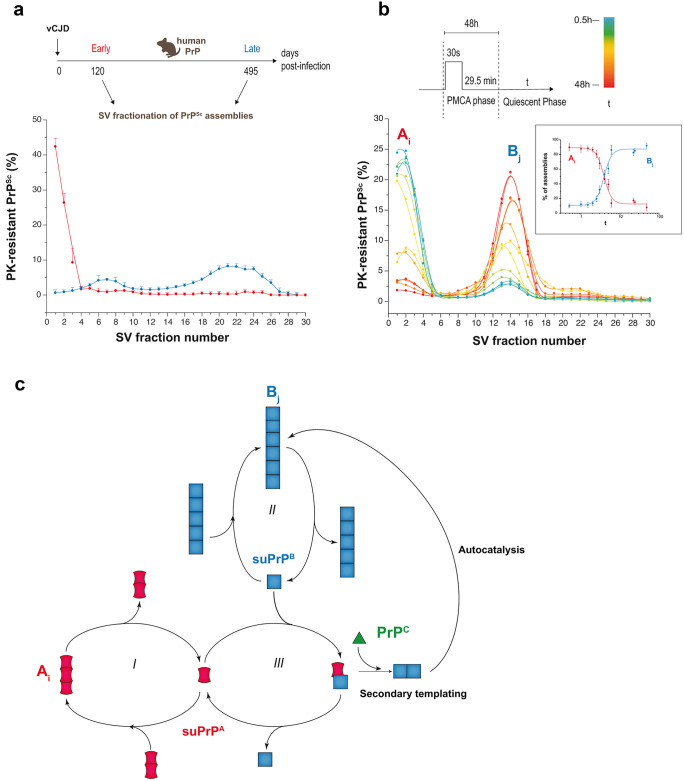Fig. 3.
PrPSc diversification during prion replication process by PMCA. a SV-based size distribution of PrPSc assemblies at early and late stages of vCJD prion pathogenesis in the brain of human PrP mice. b SV-based PrPSc size distribution in PMCA products (127S scrapie strain) analyzed immediately at the end of the PMCA reaction or after further quiescent incubation at 37 °C for the indicated period of time (t). This allows identifying two populations of PrPSc assemblies termed Ai and Bj (with i < j). Ai is mostly generated during the active phase of the PMCA reaction. During the quiescent phase, Ai decreases over time in favor of Bj according to a bimodal process (without appearance of assemblies of intermediate size). The inset graph shows the variations of the percentage of Ai and Bj as a function of the quiescent phase (t). The sigmoidal form of the curves is indicative of an autocatalytic reaction process. c Kinetic scheme describing the transformation process of Ai into Bj. Ai and Bj are in equilibrium with their respective suPrP (Igel-Egalon et al. 2017; steps I and II). The best model to account for the cooperative, PrPC-dependent transformation of Ai into Bj implicates the formation of a complex between suPrPA and suPrPB (step III). This complex is at the origin of the secondary templating pathway whereby the transformation of suPrPA to suPrPB is assisted by suPrPB, making the process autocatalytic (data from Igel-Egalon et al. 2019b)

